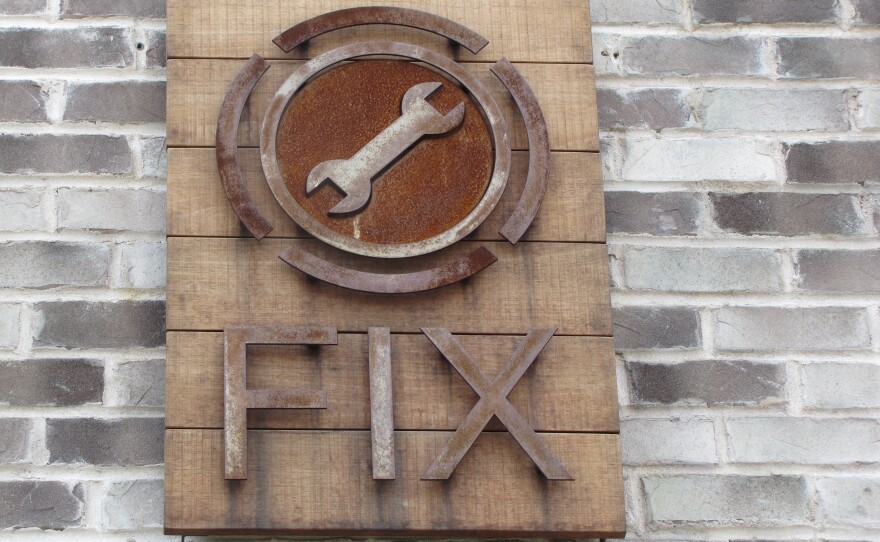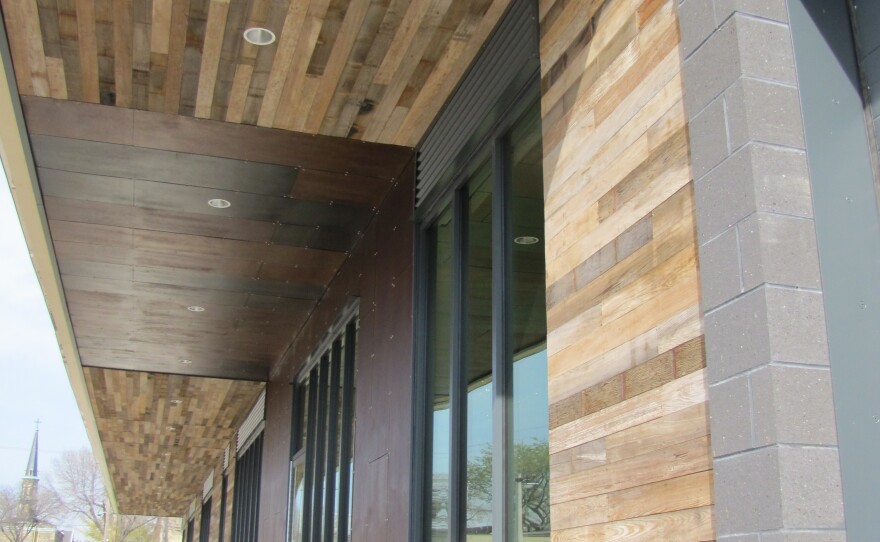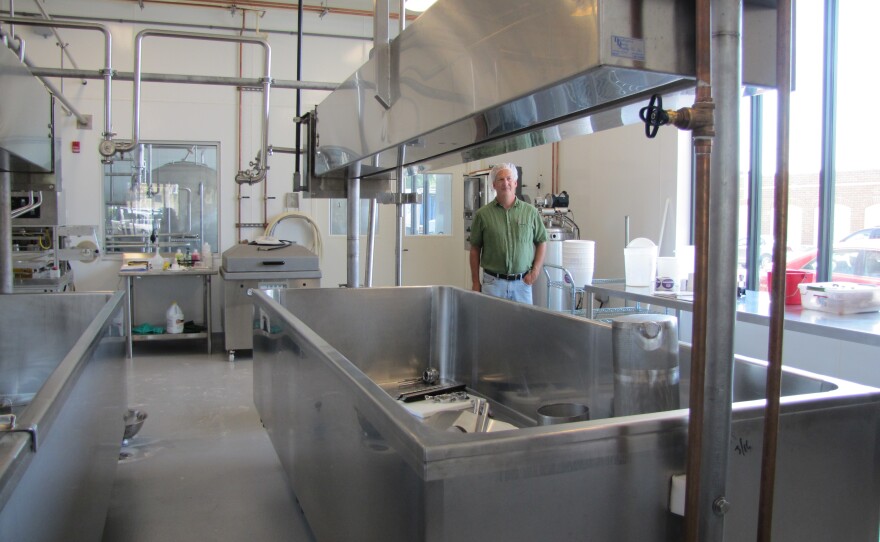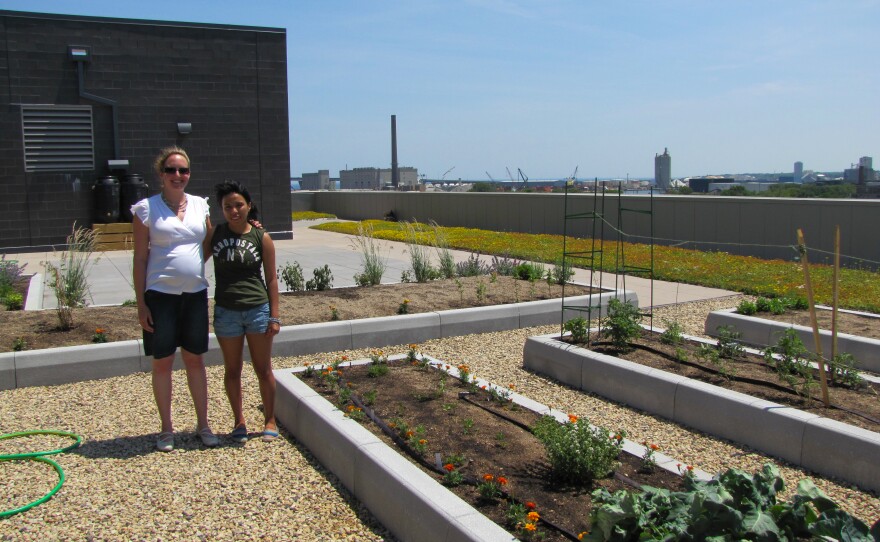People crowded onto street in Walker's Point Thursday night, to celebrate the official opening of the new Clock Shadow Building.
Attendees dug into freshly scooped ice cream and fresh cheese curds – both produced on site.
WUWM Environmental Reporter Susan Bence stepped into the four-story structure to explore it unique elements.
Half the building that now stands atop a remediated brown field is made of repurposed material.
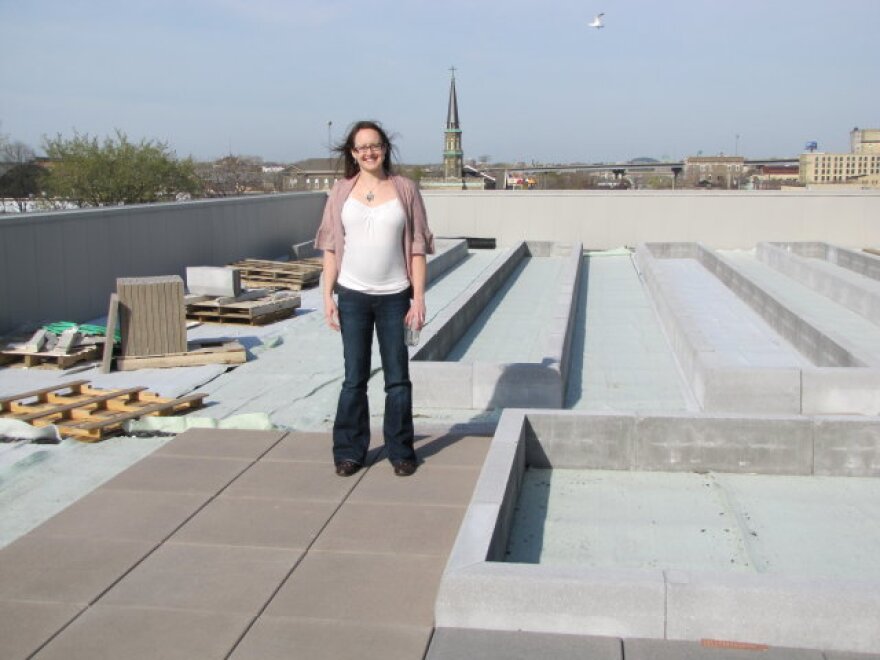
The new building is named for the nearby Allen Bradley clock tower.
When I visited Clock Shadow a couple months ago, tenants were moving in and the rooftop was evolving.
“This is Stephanie’s floor.”
That’s Juli Kaufmannn - the visionary behind every inch of this place - but you’ll hear from her later.
She’s referring to Stephanie Calloway who tends the green space atop the building.
“It’s about 700 square feet of beds that are built into the rooftop here – so we’ll be doing organic vegetable, herb and some fruit production," Calloway says.
Calloway works for one of the building’s tenants – an agency called CORE/El Centro.
It provides alternative therapies for survivors of sexual assault and trauma.
“CORE’s primary clientele are Latino immigrants and so a lot of people grew up where fresh food is abundant and then they come to the United States where the carrots don’t have flavor, the tomatoes are juiceless and it’s really hard for them to maintain their eating habits,” Calloway says.
While Calloway dreams of healthy bunches of basil and luscious tomatoes, one-third of the rooftop is set aside for “human growth.”
“For composting workshops, for the actually processing and cleaning of the harvest and also nutrition classes, cooking classes hopefully, but we’re also going to use this space for yoga and different dance classes,” Calloway says.
Calloway lifts a piece of heavy fabric to reveal what happens under the surface.
“There’s specific drainage spots where it’s kind of sloped down to bring the water - water the plants don't absorb - into pipes,” Calloway says.
Developer Juli Kaufmannn jumps in.
“The stuff we don’t capture, travels underneath the building and it’s held in a cistern and then that water is combined with gray water from the inside the building and used to flush toilets,” Kaufmannn says.
The water repurposing system is Milwaukee’s first in a commercial building.
While impressive, it is only one of Clock Shadow’s green attributes.
They also include a sophisticated geothermal heating and cooling system and an elevator powered by the friction its braking process creates.
Kaufmann says fifty percent of the building – from its cream city brick façade to windows, is recycled.
“That’s really hard to do in a way that ends up being beautiful and not looking like a rummage sale junkyard and hopefully you get a sense that it worked,” Kaufmann says.
Kaufmann is nothing if not a risk-taker.
The airy staircase spanning the interior is made of locally harvested wood.
“These are ash floorboards and they come from ash trees around greater Milwaukee that were afflicted with Emerald ash borer disease and so they were going to be felled anyway,” Kaufmann says.
Kaufmann has also sought to enrich the neighborhood and showcase its assets.
She points to the richly colored fabric threading the center of the staircase.
“A critical piece of this project was working to embrace art, beauty and culture. So there was a neighbor who is an artist and what she said we should tell the story about environmental features, - yes there’s geothermal heating and cooling and there’s some real technical explanation for what that means, but don’t do it all technical. And so what this does visually tell the story of the earth and all of its bounty and how it works and how we’re all a piece of it,” Kaufmann says.
Kaufmannn has dedicated much of Clock Shadow’s footprint to groups benefiting the neighborhood.
The tenants are a mix of non-profit agencies that provide services and for-profit entrepreneurs.
Clock Shadow Creamery shares the ground floor.
Owner Bob Wills is experienced at “separating the curds from the whey”.
He runs an award-winning cheese operation two hours west.
This is his first “satellite” operation and he admits it’s a bit risky.
“This is only as far as I know the third of fourth urban cheese factory in the country. And the other ones are in really in touristy and upscale neighborhoods, but we’re in a part of town that needed us. So we're kind of pioneering,” Wills says.
Clock Shadow Creamery employs six people – two are young cheese makers Wills has taken under his wing.
He scopes the neighborhood for more fledgling artisans, but first has to make sure he cultivates a market for the 1,000 pounds of cheese the creamery can produce every day.
“There’s a bicycle delivery service that we’ve talked with and so they’ll be able to take the cheese around to the local restaurants,” Wills says.
Wills has the fledgling rooftop garden in the back of his mind.
When it moves beyond the experimental stage, he wants to incorporate some of its harvest into his cheeses.

